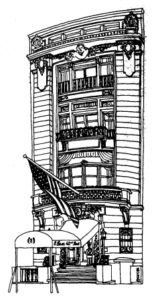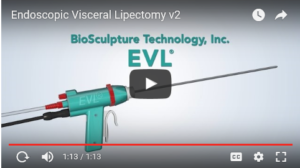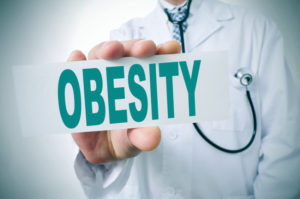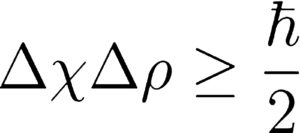 In my adolescence, I had planned to be an engineer or researcher. However, taking a teen tour of Europe, I met a boy who was born with Hemifacial Microsomia. His mother had German measles in her first trimester of pregnancy and he was born with congenital facial deformities. As he was the only one on the tour who could beat me in chess, we became fast friends. This friendship recast my life journey into being plastic and reconstructive surgeon as I saw the changes in his personality that accompanied his plastic surgical improvements. I wanted to be able to save others like my new friend from being outcasts due to facial deformity. I went to Cornell University, then Cornell Medical School, did both my residencies and chiefships at the Presbyterian New York Hospital, became a board certified general surgeon, and then a board certified plastic surgeon. My love of research persisted and was continued in undergraduate Chemistry honors and then as principal investigator of both animal and clinical studies during and my after surgical residency.
In my adolescence, I had planned to be an engineer or researcher. However, taking a teen tour of Europe, I met a boy who was born with Hemifacial Microsomia. His mother had German measles in her first trimester of pregnancy and he was born with congenital facial deformities. As he was the only one on the tour who could beat me in chess, we became fast friends. This friendship recast my life journey into being plastic and reconstructive surgeon as I saw the changes in his personality that accompanied his plastic surgical improvements. I wanted to be able to save others like my new friend from being outcasts due to facial deformity. I went to Cornell University, then Cornell Medical School, did both my residencies and chiefships at the Presbyterian New York Hospital, became a board certified general surgeon, and then a board certified plastic surgeon. My love of research persisted and was continued in undergraduate Chemistry honors and then as principal investigator of both animal and clinical studies during and my after surgical residency.
Fast forward to the early days of liposuction, when we thrust a rigid tube attached to a vacuum back and forth underneath the skin thousands of times an hour. I knew there had to be mechanical solution easier on both patient and Doctor. That led to the first in my series of tissue aspiration patents. A non-exclusive license of it to Mentor reached the market as the ARC II Reciprocating Cannula® which lessened the surgeon’s exertion and speeded patient recovery. That license ultimately found its way into Ethicon’s portfolio and created the $500 Million per year power assisted liposuction market. Since I was at Lincoln Center almost every night with my love of ballet and music, I added a few evenings at Fordham Law School to become an IP attorney to help me manage those licenses of what was now a growing and worldwide patent portfolio from a R&D company I set up, Rocin Laboratories.
BioSculpture Technology, Inc. was founded as device company to capitalize on my subsequent tissue aspiration improvements. These advanced designs had an inner tube rapidly reciprocating inside an outer sheath. The aspirating hole was aligned with a slot, enabling sufficient tissue contact to aspirate fat, but sparing the patient of the trauma of the advancing inner cannula tip and the surgeon from the drudgery of having to reciprocate the cannula him or herself, literally unleashing the artist in the surgeon®. The mechanical advantage of this tube-within-a-tube technology was embodied in the Airbrush® Liposculptor II which further reduced surgeon’s exertion and patient trauma, speeding recovery and lessening bruising and swelling. My  practice was so successful in my landmarked townhouse at 8 E 62nd St. in Manhattan that every now and then, I simply needed and took a break from it as I grew the medical device business. Then I would miss operating and surgery, and enthusiastically emmerce myself back into clinical practice again. I picked up an MBA from Columbia Business School to help manage the growing business which gave me opportunities to travel, lecture and market at places as remote as South Korea.
practice was so successful in my landmarked townhouse at 8 E 62nd St. in Manhattan that every now and then, I simply needed and took a break from it as I grew the medical device business. Then I would miss operating and surgery, and enthusiastically emmerce myself back into clinical practice again. I picked up an MBA from Columbia Business School to help manage the growing business which gave me opportunities to travel, lecture and market at places as remote as South Korea.
Though liposuction is generally considered an operation of inches and not one measured in pounds, the Airbrush® Liposculptor’s mechanical advantage allowed the surgeon to effortlessly remove as much as 10 lbs. in an hour, being limited only by the hemodynamic shifts caused by larger fat removals, generally carried out in an outpatient setting such as my townhouse.
As I had a busy practice in Manhattan and used our own equipment, I began operating on overweight and then frankly obese patients. I was struck by the fact that a significant amount of ”belly” fat was not subcutaneous where I could get to it with liposuction but deep inside the abdomen. I began to study fat metabolism and learned that deep, visceral fat underneath the muscles secretes noxious cellular hormones and one of them, resistin, antagonizes insulin. This poison prevents sugar from entering the cells so the blood sugar rises and it is eliminated in the urine, causing type 2 Diabetes, the kind 90% of diabetics have. The patient is resultantly hungry, has a “brain fog”, and has no energy, proving the old concept of obese patients as just having no will power to be a total misconception. The patient with visceral fat is “chemically challenged” with metabolic syndrome. He or she is likely to have sleep apnea, gastric reflux, hypertension, type 2 Diabetes, a bad lipid profile, and be more likely to have vascular disease, autoimmune diseases or cancers. His or her life is shortened and its quality reduced.
 To address what I saw as a new challenge, I turned my attention to finding a safe way to remove this visceral or “belly” fat to cure the metabolic problem and eliminate the cause of type 2 diabetes. Fortunately, our tube-within-a-tube technology is easily transformed from a wand into a pistol configuration and customized as the EVL® device for the minimally invasive laparoscopic removal of the visceral fat in the intestinal mesentery deep within the abdomen. BioSculpture Technology, Inc. now has eight allowed US Patents, and others pending, which protect both the method and the device for the endoscopic removal of this noxious visceral fat.
To address what I saw as a new challenge, I turned my attention to finding a safe way to remove this visceral or “belly” fat to cure the metabolic problem and eliminate the cause of type 2 diabetes. Fortunately, our tube-within-a-tube technology is easily transformed from a wand into a pistol configuration and customized as the EVL® device for the minimally invasive laparoscopic removal of the visceral fat in the intestinal mesentery deep within the abdomen. BioSculpture Technology, Inc. now has eight allowed US Patents, and others pending, which protect both the method and the device for the endoscopic removal of this noxious visceral fat.
Today, launching production of this EVL® device as well as sleeker, electromagnetic versions of the earlier two cosmetic devices (Airbrush® Liposculptor IIE and Airbrush® Liposculptor III) and establishing Centers of Excellence about the globe which can help these patients both cosmetically and metabolically, has become my new life goal. It allows me to utilize all my aptitudes and knowledge and will be my way of giving back to a medical profession that has been so very good to me.
And coming full circle, though we’re so evenly matched we seldom play chess any more and there are few traces of his earlier deformity, my childhood friend is the second largest investor, after myself, in my medical device company, sharing in this goal of bringing this disruptive technology to the millions of patient who can benefit from it.

 The
The 